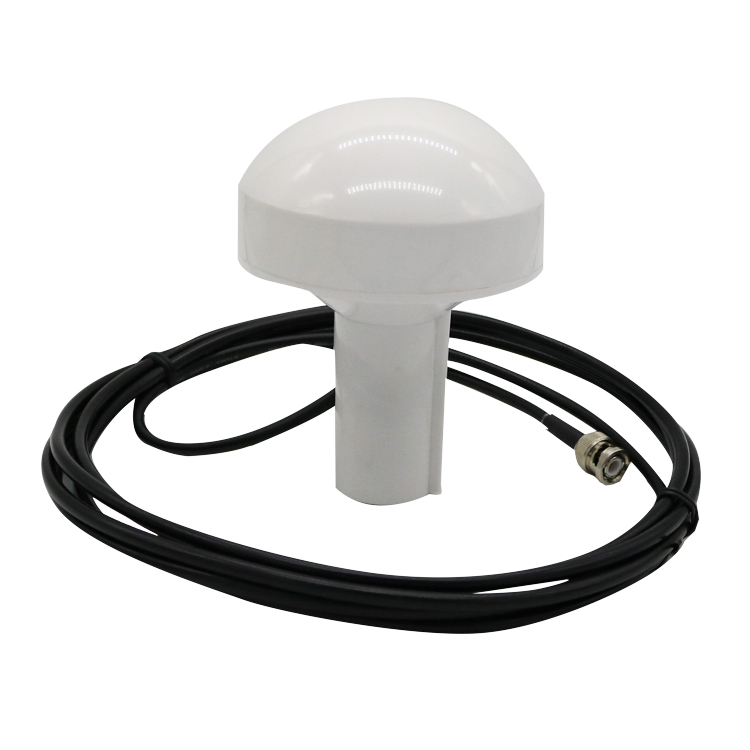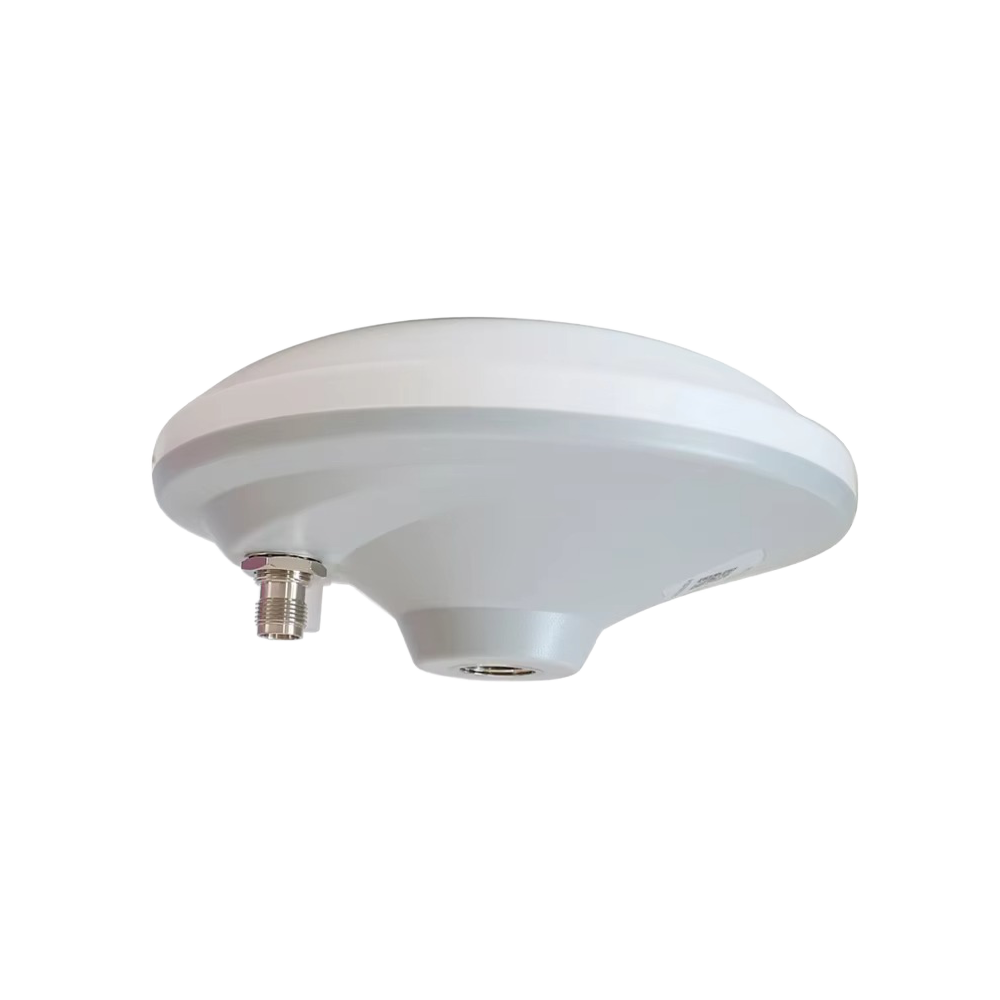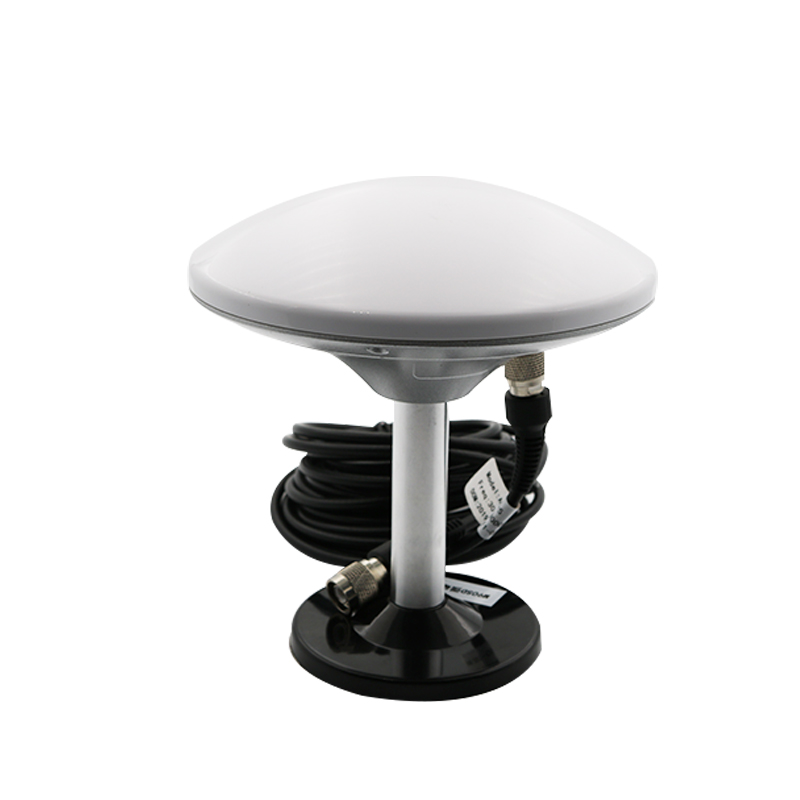The GLONASS BDS Antenna is a specialized navigation component engineered to receive signals from multiple global navigation satellite systems (GNSS), including GLONASS, BDS (BeiDou Navigation Satellite System), and Galileo. This multi-constellation capability ensures that mariners have access to robust positioning data even in challenging environments where signal interference or blockages are common. Unlike single-constellation antennas, which may rely solely on GPS, this antenna leverages the strengths of multiple satellite networks, enhancing accuracy, reliability, and availability—key factors when navigating remote oceanic regions or busy coastal waters.
At its core, the antenna is designed to address the unique challenges of maritime operations. Saltwater corrosion, extreme temperature fluctuations, high winds, and constant vibration are just a few of the environmental stressors that nautical equipment must withstand. The GLONASS BDS Antenna rises to these challenges with a rugged construction that prioritizes durability without compromising performance. Its white color not only provides a sleek, professional appearance but also helps reflect sunlight, reducing heat absorption and maintaining optimal operating temperatures during prolonged exposure to direct sunlight.
With dimensions of either D147 x 62mm or D160 x 62mm, the antenna strikes a balance between compactness and functionality. Its streamlined design allows for easy installation on various parts of a vessel, from the deck to the radar mast, without obstructing other equipment or interfering with the vessel’s aerodynamics. The TNC-K connector ensures a secure, weatherproof connection to navigation systems, minimizing signal loss and ensuring consistent data transmission even in rough seas.
Connectivity and Frequency Range: Versatility in Signal Reception
The GLONASS BDS Antenna is equipped with a TNC-K connector, a popular choice in maritime and aerospace applications for its robust performance and reliable connectivity. TNC connectors are designed to withstand high-frequency signals and provide excellent shielding against electromagnetic interference (EMI), a critical feature in the electrically noisy environment of a ship, where radar, radios, and other electronic systems can potentially disrupt GPS signals.
One of the antenna’s most notable features is its wide and customizable frequency range. It is capable of receiving signals from:
GLONASS: L1 and L2 bands
Galileo: L1, E5b, and E5a bands
This broad frequency coverage ensures compatibility with multiple satellite systems, reducing the risk of signal loss due to satellite outages or geographic limitations. For example, GLONASS, Russia’s satellite navigation system, offers strong coverage in high-latitude regions, making it particularly valuable for vessels operating in the Arctic or Antarctic. Galileo, Europe’s GNSS, provides enhanced accuracy and reliability, with its E5b and E5a bands offering improved performance in challenging environments such as urban canyons or, in the maritime context, near coastal cliffs or large structures.
The option to customize the frequency range further enhances the antenna’s versatility. Vessel operators can work with manufacturers to tailor the antenna’s reception capabilities to their specific needs, whether that involves adding support for additional satellite systems (such as GPS or BeiDou) or optimizing for certain frequency bands that are critical for their operational area. This flexibility ensures that the antenna can adapt to evolving navigation requirements and technological advancements in satellite communication.
Polarization: Ensuring Signal Stability in Dynamic Environments
Circular polarization is a key technical feature that sets the GLONASS BDS Antenna apart for maritime use. Unlike linear polarization, which relies on the alignment of the antenna with the satellite’s signal, circular polarization allows the antenna to receive signals regardless of the angle at which they arrive. This is especially important in maritime environments, where the vessel is constantly in motion—pitching, rolling, and yawing due to waves and wind. A linearly polarized antenna would struggle to maintain a consistent connection under such conditions, as the changing orientation would disrupt the signal alignment.
Circular polarization works by rotating the electromagnetic field of the signal as it travels, allowing the antenna to capture the signal from any angle. This ensures that even when the vessel is moving erratically, the antenna remains receptive to satellite signals, providing continuous and reliable positioning data. This stability is crucial for safe navigation, as sudden signal drops could lead to incorrect position readings, potentially resulting in collisions with other vessels, grounding, or deviation from the intended course.
Gain and Performance: Maximizing Signal Strength
Gain is a measure of an antenna’s ability to amplify incoming signals, and the GLONASS BDS Antenna boasts a gain of ≥5 dBi. This level of gain is carefully calibrated to balance signal amplification with noise reduction. In maritime environments, where signals may be weakened by atmospheric interference, rain, or multipath effects (where signals reflect off the water’s surface before reaching the antenna), a higher gain helps ensure that weak signals are still detectable and usable.
The antenna also features a LAN gain of 402 dBi, a specification that highlights its efficiency in transmitting processed signal data to the vessel’s navigation system via a local area network (LAN). This high LAN gain ensures that the positioning data, once received and processed by the antenna, is transmitted with minimal loss, maintaining the integrity and accuracy of the information that mariners rely on for decision-making.
VSWR: Ensuring Efficient Signal Transmission
Voltage Standing Wave Ratio (VSWR) is a critical metric that measures how efficiently radio frequency (RF) power is transmitted from the antenna to the connected device (or vice versa). A VSWR of 2.0 or lower is considered acceptable for most RF applications, indicating that the majority of the signal is being transmitted rather than reflected back, which can cause signal loss and potential damage to equipment.
The GLONASS BDS Antenna’s VSWR of 2.0 ensures efficient signal transmission, minimizing power loss and maximizing the strength of the received signals. This is particularly important in maritime settings, where the distance between the antenna and the navigation system can vary, and signal degradation must be minimized to maintain accurate positioning data.
Material: Durability in Harsh Environments
The antenna is constructed from ABS (Acrylonitrile Butadiene Styrene), a thermoplastic polymer known for its exceptional durability, impact resistance, and resistance to corrosion. ABS is widely used in marine applications due to its ability to withstand exposure to saltwater, UV radiation, and extreme temperatures. Unlike metal antennas, which can rust or corrode over time, ABS maintains its structural integrity even after prolonged exposure to harsh maritime conditions, ensuring a long service life and reducing maintenance requirements.
The use of ABS also contributes to the antenna’s lightweight design, which is important for installation on vessels where weight distribution can affect stability. Additionally, ABS is easy to mold, allowing for the precise manufacturing of the antenna’s shape to optimize signal reception and aerodynamic performance.
Reliability in Extreme Conditions
Maritime environments are some of the most demanding on electronic equipment, and the GLONASS BDS Antenna is engineered to thrive in these conditions. Its ABS construction provides robust protection against saltwater corrosion, a common issue that can degrade metal components over time. Saltwater spray, high humidity, and constant exposure to moisture can cause rust and electrical shorts in less durable antennas, but the GLONASS BDS Antenna’s sealed design and corrosion-resistant materials prevent such damage, ensuring consistent performance even in the harshest saltwater environments.
Extreme temperature fluctuations are another challenge faced by nautical equipment. From freezing temperatures in polar regions to scorching heat in tropical waters, the antenna must maintain its functionality across a wide temperature range. The use of high-quality ABS and internal components that are rated for extreme temperatures ensures that the antenna operates reliably, whether it is exposed to sub-zero winds or intense sunlight.
Vibration and shock resistance are also critical for maritime equipment, as vessels experience constant movement from waves, engine vibrations, and rough seas. The GLONASS BDS Antenna’s construction includes shock-absorbing features and secure mounting points that minimize the impact of vibration on internal components, preventing damage and ensuring that signal reception remains stable even during rough voyages.
Enhanced Accuracy and Positioning
The combination of multi-constellation support, circular polarization, and high gain makes the GLONASS BDS Antenna a powerful tool for achieving precise positioning at sea. By receiving signals from multiple satellite systems, the antenna can cross-reference data to eliminate errors and improve accuracy. For example, if a GPS signal is temporarily disrupted, the antenna can rely on GLONASS or Galileo signals to maintain positioning data, ensuring that mariners always have access to reliable information.
Circular polarization further enhances accuracy by reducing the impact of multipath interference, a phenomenon where satellite signals reflect off the water’s surface or other objects (such as nearby ships or cliffs) before reaching the antenna. These reflected signals can cause errors in positioning calculations, but circular polarization helps the antenna distinguish between direct and reflected signals, minimizing their impact on accuracy.
In practical terms, this enhanced accuracy translates to safer navigation. Whether a vessel is navigating through narrow channels, avoiding shallow waters, or maintaining a precise course in busy shipping lanes, the ability to determine position with a high degree of accuracy is essential. The GLONASS BDS Antenna provides this accuracy, giving mariners the confidence to make informed decisions even in challenging conditions.
Easy Installation and Integration
The GLONASS BDS Antenna is designed with ease of installation in mind, a crucial consideration for vessel operators who need to minimize downtime during equipment upgrades or replacements. Its compact dimensions (D147 x 62mm or D160 x 62mm) make it suitable for installation in a variety of locations on a vessel, from the deck to the radar mast, without requiring extensive modifications.
The TNC-K connector is compatible with most standard navigation systems, making integration straightforward. Vessel operators can connect the antenna to their existing GPS receivers, chart plotters, or integrated bridge systems with minimal effort, ensuring that the antenna works seamlessly with their current equipment. This compatibility reduces the need for expensive upgrades to other navigation components, making the GLONASS BDS Antenna a cost-effective solution for enhancing navigation capabilities.
Additionally, the antenna’s lightweight design simplifies installation, as it can be mounted using standard brackets and hardware. This ease of installation means that even smaller vessels, which may have limited technical resources, can benefit from the antenna’s advanced features without requiring specialized expertise.
-
Commercial Shipping
Commercial shipping is the lifeblood of global trade, with thousands of vessels transporting goods across oceans every day. For these vessels, reliable navigation is essential for meeting delivery schedules, avoiding delays, and ensuring the safety of crew and cargo. The GLONASS BDS Antenna is an invaluable asset for commercial ships, providing the accurate positioning data needed to navigate busy shipping lanes, such as the English Channel or the Strait of Malacca, where congestion and narrow passages require precise course-keeping.
In addition to day-to-day navigation, commercial ships rely on accurate positioning for compliance with international regulations, such as the International Maritime Organization’s (IMO) requirements for Automatic Identification System (AIS) transponders, which use GPS data to broadcast a vessel’s position to other ships and coastal authorities. The GLONASS BDS Antenna ensures that AIS data is accurate and up-to-date, enhancing collision avoidance and maritime safety.
Offshore Industries
Offshore industries, including oil and gas exploration, wind farm construction,operate in remote and often challenging marine environments. These operations require precise positioning to ensure that equipment is deployed in the correct location, structures are built to exact specifications, and safety zones are maintained. The GLONASS BDS Antenna’s ability to receive signals from multiple satellite systems is particularly valuable in these settings, where access to reliable GPS signals may be limited due to remote locations or the presence of large offshore structures.
For example, during the installation of offshore wind turbines, vessels must position themselves with millimeter-level accuracy to lower heavy components into place. The GLONASS BDS Antenna provides the precise positioning data needed to guide these operations, reducing the risk of costly errors and ensuring that projects are completed on schedule.
Recreational Boating
Recreational boaters may not have the same navigational demands as commercial ships, but they still rely on accurate positioning to explore coastal waters, navigate to favorite fishing spots, and return to port safely. The GLONASS BDS Antenna is an excellent choice for recreational vessels, offering easy installation, reliable performance, and compatibility with popular marine electronics, such as chart plotters and fish finders.
For boaters who venture into unfamiliar waters, the antenna’s multi-constellation support provides peace of mind, ensuring that they can maintain a fix on their position even in areas where GPS coverage is spotty. Additionally, the antenna’s durable construction means it can withstand the rigors of recreational use, from weekend outings to extended cruising trips.
Search and Rescue Operations
Search and rescue (SAR) teams operate in time-critical situations, where every second counts in locating and assisting distressed vessels or individuals. In these operations, accurate positioning data is essential for coordinating rescue efforts, navigating to the scene quickly, and ensuring that resources are deployed effectively. The GLONASS BDS Antenna’s reliability and accuracy make it a valuable tool for SAR vessels and aircraft, providing the precise location information needed to narrow down search areas and reach those in need as quickly as possible.
In remote or harsh environments, such as the open ocean or polar regions, the antenna’s ability to receive signals from multiple satellite systems is particularly important, as it reduces the risk of signal loss that could delay rescue efforts. The antenna’s rugged construction also ensures that it remains operational even in the extreme conditions often encountered during SAR missions, such as high winds, heavy rain, or freezing temperatures.
Maintenance and Longevity: Ensuring Sustained Performance
To maximize the lifespan and performance of the GLONASS BDS Antenna, regular maintenance is essential. Fortunately, the antenna’s design minimizes the need for extensive upkeep, making it a low-maintenance solution for maritime operators.
Routine Inspection
Regular visual inspections are recommended to check for signs of damage, such as cracks in the ABS housing, loose connections, or corrosion around the TNC-K connector. These inspections can be performed during routine vessel maintenance and should be carried out more frequently in harsh environments, such as areas with high salt spray or frequent storms.
Cleaning
Over time, the antenna’s surface may accumulate dirt, salt, or debris, which can interfere with signal reception. Cleaning the antenna with a soft cloth and fresh water (avoiding harsh chemicals or abrasive materials) helps maintain optimal performance. It is important to ensure that the antenna is completely dry before returning it to service to prevent water intrusion.
Connector Maintenance
The TNC-K connector should be inspected regularly to ensure a secure, weatherproof connection. Applying a thin layer of dielectric grease to the connector can help prevent corrosion and ensure a tight seal, minimizing signal loss. If the connector shows signs of damage or wear, it should be replaced promptly to avoid compromising signal transmission.
Firmware Updates
For antennas with customizable frequency ranges or advanced features, manufacturers may release firmware updates to improve performance or add new capabilities. Vessel operators should check with the manufacturer periodically for updates and follow the recommended procedures to install them, ensuring that the antenna remains up-to-date with the latest technological advancements.
With proper maintenance, the GLONASS BDS Antenna can provide reliable service for many years, making it a cost-effective investment in maritime navigation safety and efficiency.




































































 Language
Language
 En
En Cn
Cn Korean
Korean

 Home >
Home > 







 18665803017 (Macro)
18665803017 (Macro)













